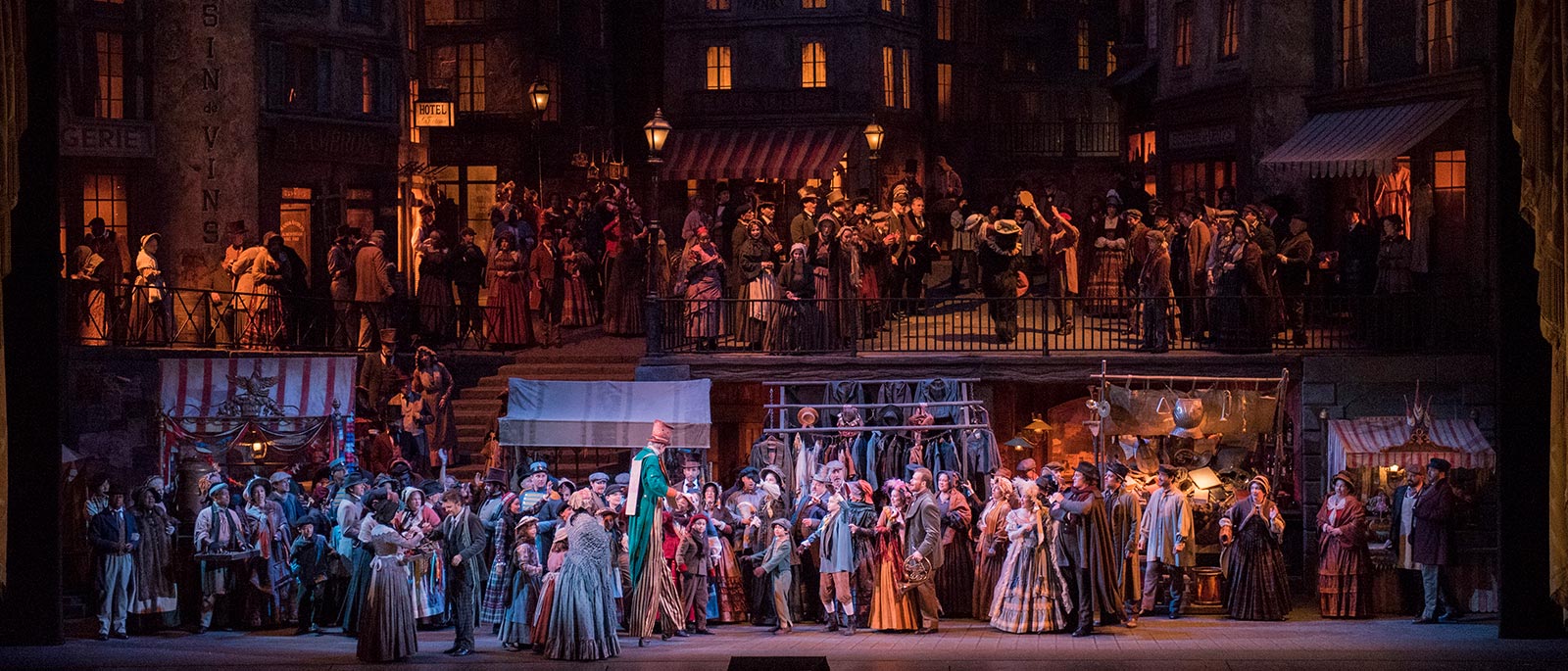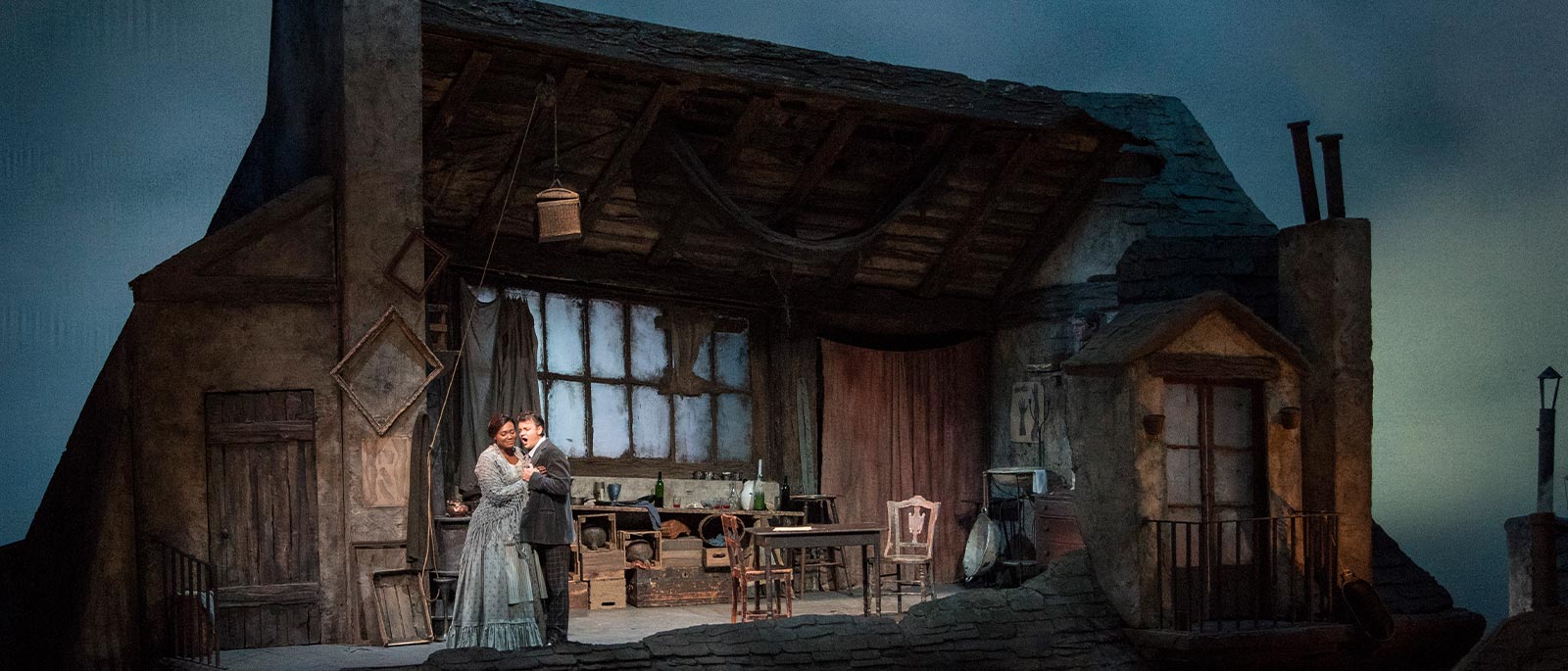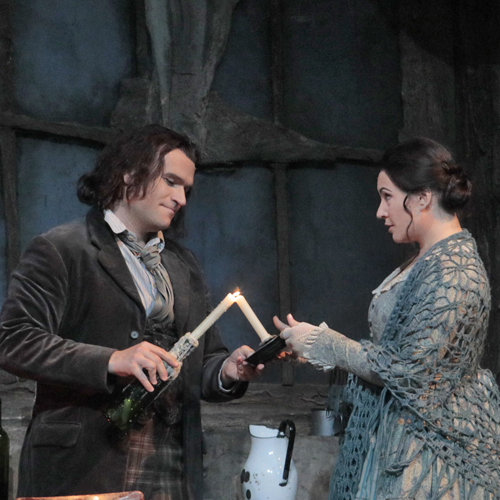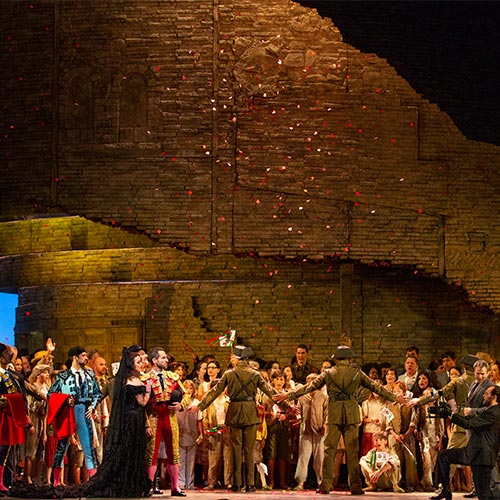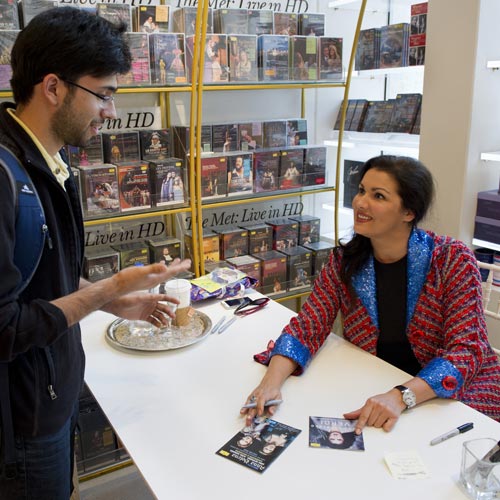This production ran: Jan 1 - Dec 31
Overview
These performances and the entirety of the 2020–21 season have been CANCELED based on the advice of health officials who advise the Met and Lincoln Center. For more information and to review your options if you purchased tickets for any of these dates, read the complete announcement.
Franco Zeffirelli’s definitive staging of the world’s most popular opera returns for another season with several luxury casts gracing the garrets of bohemian Paris. Tenors Dmytro Popov, Joseph Calleja, and Matthew Polenzani are the tortured poet Rodolfo, with sopranos Angel Blue (fresh from her triumphant performances of Bess in Porgy and Bess last season), Eleonora Buratto, and Angela Gheorghiu trading off as the heartbreaking seamstress Mimì. Domingo Hindoyan, Xian Zhang, Nimrod David Pfeffer, and Marco Armiliato conduct.
Production a gift of Mrs. Donald D. Harrington
Revival a gift of The Sybil B. Harrington Endowment Fund
Languages
Titles
Timeline
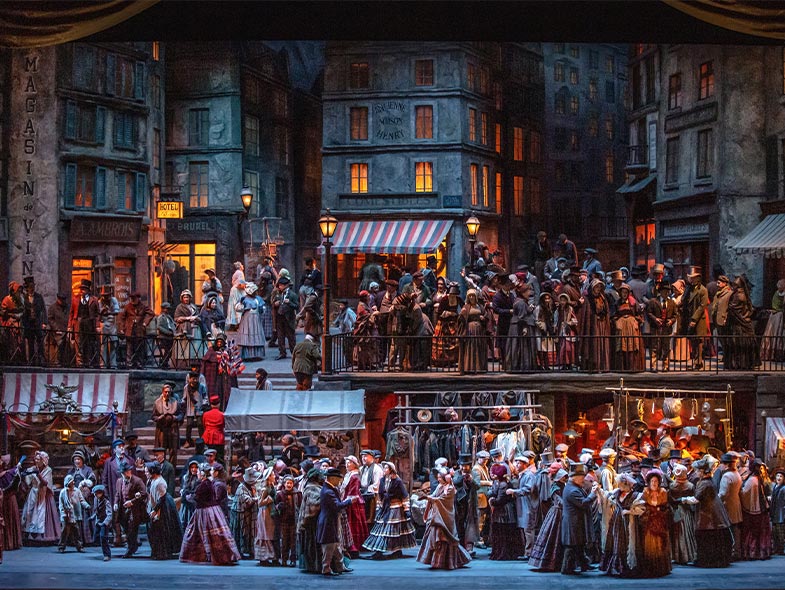
World premiere: Teatro Regio, Turin, 1896. La Bohème, the passionate, timeless, and indelible story of love among young artists in Paris, can stake its claim as the world’s most popular opera. It has a marvelous ability to make a powerful first impression and to reveal unsuspected treasures after dozens of hearings. At first glance, La Bohème is the definitive depiction of the joys and sorrows of love and loss; on closer inspection, it reveals the deep emotional significance hidden in the trivial things—a bonnet, an old overcoat, a chance meeting with a neighbor—that make up our everyday lives.
Creators
Giacomo Puccini (1858–1924) was immensely popular in his own lifetime, and his mature works remain staples in the repertory of most of the world’s opera companies. His librettists for La Bohème, Giuseppe Giacosa (1847–1906) and Luigi Illica (1857–1919), also collaborated with him on his next two operas, Tosca and Madama Butterfly. Giacosa, a dramatist, was responsible for the stories and Illica, a poet, worked primarily on the words themselves.
PRODUCTION
Franco Zeffirelli
SET DESIGNER
Franco Zeffirelli
COSTUME DESIGNER
Peter J. Hall
LIGHTING DESIGNER
Gil Wechsler
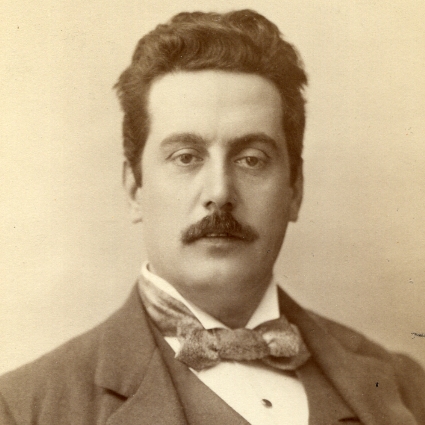
COMPOSER
Giacomo Puccini
Setting
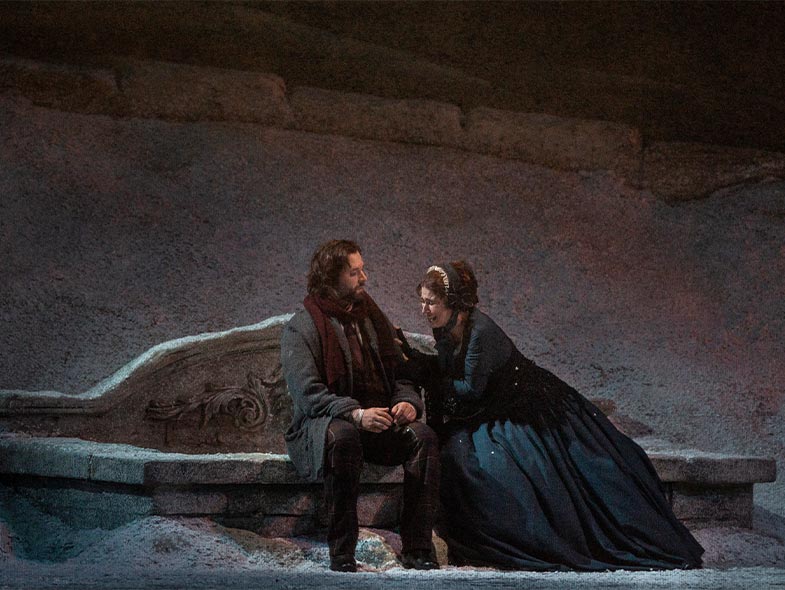
The libretto sets the action in Paris, circa 1830. This is not a random setting, but rather reflects the issues and concerns of a particular time when, following the upheavals of revolution and war, French artists had lost their traditional support base of aristocracy and church. The story centers on self-conscious youth at odds with mainstream society—a Bohemian ambience that is clearly recognizable in any modern urban center. La Bohème captures this ethos in its earliest days.
Music
Lyrical and touchingly beautiful, the score of La Bohème exerts an immediate emotional pull. Many of its most memorable melodies are built incrementally, with small intervals between the notes that carry the listener with them on their lyrical path. This is a distinct contrast to the grand leaps and dives that earlier operas often depended on for emotional effect. La Bohème’s melodic structure perfectly captures the “small people” (as Puccini called them) of the drama and the details of everyday life.
